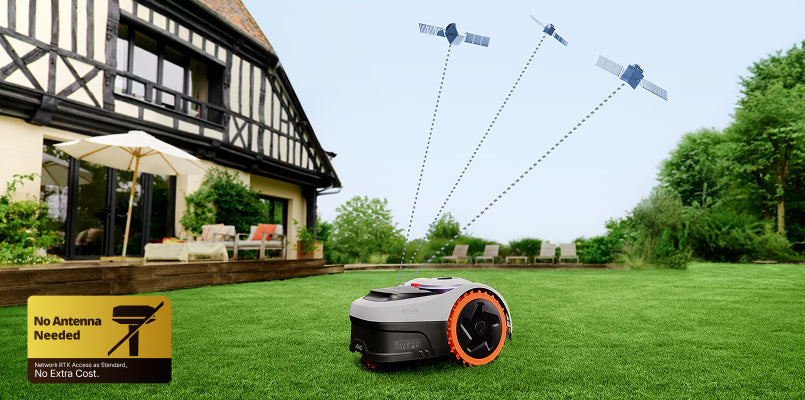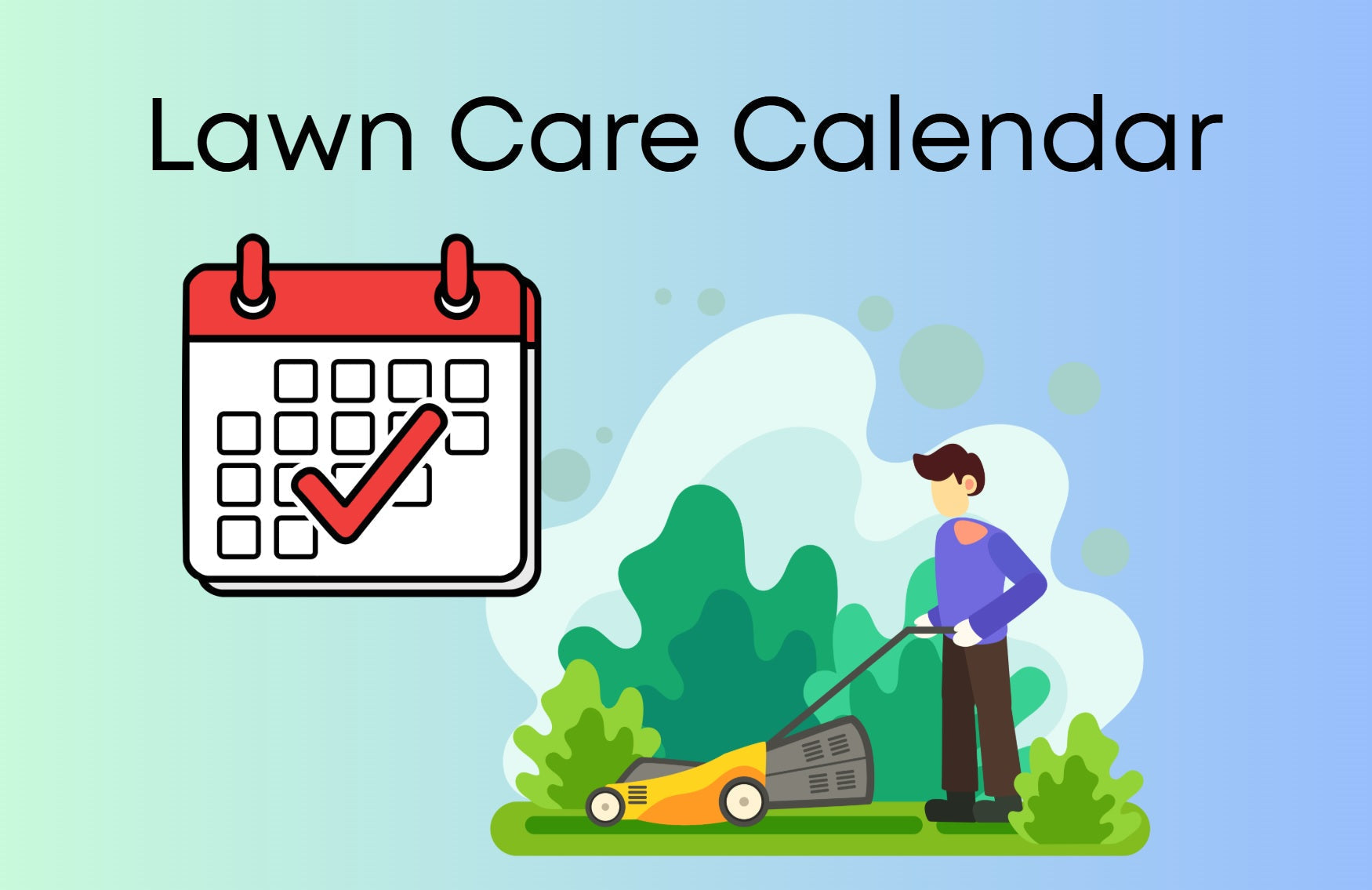Have you ever wondered why your neighbor’s lawn looks so green and lush? How do other people make their garden so neat and nice? Do they mow more regularly than you do? Getting a healthy and beautiful lawn requires more than a good mower; it takes time, effort, and care. Sound difficult?
Don’t worry. We’ve summarized the top 10 lawn mowing tips to help you keep your lawn well-manicured, whether you’re new to gardening or have been searching for the cure to fix the bumpy and barren lawn.

1. Cut at the Right Height
The optimal height varies by grass types, climate, and the care you give to your lawn. Most people will cut anywhere from 1.5 to 3.5 inches, which can be used as a proven experiment. Or you may follow the one-third rule—never cut more than 1/3 of the grass blade in a single mowing. You may cut at a slightly different height and see what works best for you.
The height of your lawn is one of the most important factors for its health. It’s better to leave the grass a bit longer (no shorter than 2 inches) in summer, so it can retain moisture as much as possible to cope with the heat. As for winters, cut the grass shorter to prevent disease. Also, shorter means you can wait longer for the next mowing—lower chance to encounter weather problems.
2. Keep the Mower Blades Sharp
As the saying goes, a workman must first sharpen his tools if he wants to do his work well. Sharp blades can not only get the cutting done faster and cleaner but also help keep the grass away from possible disease and pests. Dull blades usually come with rust, which might make the grass vulnerable.
So, don’t forget to sharpen your mower blades at least once a season. If you’re using a robot lawn mower, you may just replace the blades, as replacement blades are inexpensive and easy to swap out.

To sharpen lawn mower blades, remove them, then use a scraper, metal file, or handheld grinder to clean and clamp the blade. If you are not confident about doing it, take it to a dealer.
3. Mow When the Grass is Dry
Don’t mow when the grass is wet. Wet grass tends to stick together, causing clogging and clumping, which might damage the blade or the whole mower. Additionally, when a mower passes over wet soil, it can compress the ground, reducing air circulation and water drainage.

After a rainfall, wait for the soil to become firm and the grass to stand up on its own, then you can mow. If you have to mow wet grass, raise the deck, sharpen the blades, and clean after the mowing circle is finished.
4. Change Your Mowing Pattern
One of the easily overlooked aspects of lawn care is the mowing pattern. Mowing in the same path and direction, and at the same height consistently, will cause soil compression and eventually lead to uneven grass length and unhealthy roots.
Alternating your mowing pattern ensures that the grass won’t lean in one direction and part of the soil won’t sink, making your lawn patchy and look bad. It’s an easy and effective way to make your lawn healthy. So, consider making a change next time you mow—your grass will thank you.

5. Mow Regularly
Grass grows 1/5 of an inch or higher per day under ideal conditions. How fast grass grows varies with grass types, seasons, and the care it receives. If you let the grass grow on rainy summer days for over a week, your lawn might grow so long that one mowing won’t suffice. During peak growing season, you should mow your lawn weekly.
That said, you can adjust the frequency based on the grass type, weather, and the actual conditions.
Admittedly, keeping your lawn healthy and lush takes time and effort. If you don’t have enough spare time for your lawn, or if you simply don’t want to put effort into it, use a robotic lawn mower, which can automatically do the chore for you.
6. Leave the Clippings on the Lawn
Apart from cutting correctly, fertilizing is also essential. And what could beat the clippings—the most accessible natural nutrient your lawn can get. A lawn mower with a mulching mode will leave the grass clippings on the lawn, returning valuable nutrients like nitrogen, phosphorus, and potassium to the soil, which helps the lawn stay healthy.

You may also apply grass fertilizer manually. Different fertilizers produce different effects. Before purchase, determine your lawn’s needs and choose the right fertilizer with the accurate N-P-K ratio.
7. Choose the Right Lawn Mower
As discussed above, not every lawn mower can mulch. Actually, lawn mowers vary in size, features, and price. The right lawn mower can cut cleaner and faster, “provide“ fertilizer, and achieve more. Some lawn mowers are designed for complex terrains. Some mowers can do virtual boundaries with GPS and advanced technology.
Choose a smart lawn mower if you want the mower to mow autonomously and control it over a phone App.
Among those lawn mower types, a robotic lawn mower is highly recommended nowadays because it’s affordable yet capable. For example, the best-selling wire-free robotic mower, Navimow i105 Robotic Lawn Mower, features upgraded positioning technology with cm-level accuracy for virtual boundaries and multiple advanced sensors for obstacle avoidance and weather monitoring.

The mower can climb slopes up to 17°, with an adjustable cutting height. Also, you can control it through a dedicated App on your phone, including starting or stopping mowing, setting schedules, and checking the mower’s status. Check it out now!
8. Clean Your Mower After Use
Maintenance is as important as getting the right mower. Basic maintenance tasks involve cleaning your mower after use. Mud and clippings can accumulate on the mower, leading to rust and corrosion over time. Cleaning your mower after use keeps its components, like blades and the deck, clean, ensuring an optimal mowing experience and a longer lifespan of the mower since there’s less wear and tear.

To clean your mower, power off the machine and let it cool down first. Use a scraper or brush to scrape off large debris. Then use a sprayer to wash down mud and other remains. Always follow the mower’s manual or ask for support if you are not confident at doing it yourself.
9. Trim the Edge
Trimming the edge of your lawn is an effective way to greatly enhance the condition of your outdoor space. By edging, you can prevent the grass roots from invading your garden from other areas, which helps define your lawn boundary for a clear mowing path and easier mowing. A cleanly edged lawn undoubtedly looks sharp and neat.

Edging also helps promote a healthy lawn, which is particularly true if your lawn contains flowerbeds or pathways. By creating a barrier between grass and other plants or between different grass types, you can stop the grass from competing for resources, eventually hurting other plants, leading to patchy growth.

10. Customize for Uniqueness
Once you’ve had a healthy and lush lawn, consider adding a touch of personality.
Design patterns like stripes and waves to make your lawn stand out. Cut some characters or even a cartoon figure for special occasions like birthday parties. For simple stripes, mow in straight lines in the opposite direction.
There are many online tutorials for you to follow. You may also contact professional landscaping companies to design lawn patterns. By the way, some robot mowers, like the Navimow X3, allow you to choose patterns and press a button to let the machine create patterned cuts on your lawn. Again, the right lawn mower matters a lot in lawn care.

FAQ
What is the one-third rule for lawn mowing?
The one-third rule states that you should not cut more than one-third of the grass blade’s height at a single mowing session. It’s a rule for maintaining a healthy lawn.
What is the most effective way to mow a lawn?
Choose the right tool and follow the top 10 lawn mowing tips above. We have different mowing needs and lawns, so practice those tips and do some tests to figure out the best approach to achieve a healthy and beautiful lawn.
How to get a nice edge on your lawn?
Mow the grass to an appropriate height, and use a manual or electric edger or string trimmer to create a clear line between the lawn and other plants or walkways. It’s recommended to edge when the soil is slightly moist and work slowly to ensure a clean edge and your safety.
Conclusion
Remember, good things take time. Your lawn won’t turn green overnight. Pick the right tool, maintain it regularly, and put some time and effort into mowing. Practice these tips in your lawn care routine, and you can achieve a healthy and beautiful garden. That said, you can always adjust the tasks according to the grass growth conditions. Happy mowing!
More Blog
Bermuda Grass vs. St. Augustine Grass
Planning a new lawn? Thinking about which grass to plant? You might already be weighing up Bermuda and St. Augustine, two of the most common warm-season grasses grown across the southern states. Well, Bermuda and St. Augustine grasses are both...
Best Grass for Shade: Top Varieties for Cool and Warm Climates
For lawns that suffer from the shade of large trees, tall fences, and building shadows, the choice of grasses becomes a bit limited. You can’t go with every grass type because most of them would die due to a lack...
Why is My Grass Turning Yellow? Common Reasons and How to Fix
No one likes to see a yellow lawn patch in their lawn. But it comes uninvited and compels the lawn owner to think about why it happened. Your grass could turn yellow if it is suffering from nutrient deficiency, overwatering,...
When is the Best Time to Plant Grass Seed?
Every lawn owner is eager to get rid of those bald patches and make the lawn lush and green from every corner. But you can’t just grab grass seeds and plant them whenever you want. Beginners often don’t know the...
Summer Lawn Care Tips: Smarter Lawn Care for a Better Season
Summer's finally here. A time when the days are long, the sun is high, and the sweet smell of freshly cut grass hangs languidly in the air. For many of us, a lush, green lawn is the centerpiece of summer,...
Month-by-Month Lawn Care Calendar for the US
Lawns are sensitive, so you have to do everything at the right time, whether mowing, applying fertilizer, or watering. Otherwise, you will end up ruining your lawn while trying to make it healthier. Beginner gardeners and new lawn owners often...







Share: